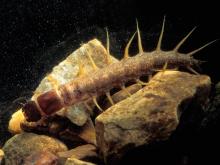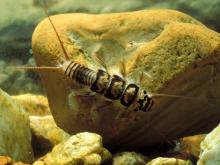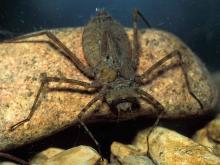Aquatic Invertebrates
Media

Species Types
Scientific Name
Chauliodes, Neohermes, and Nigronia spp. (in eastern US)
Description
Fishfly larvae look a lot like their cousins the hellgrammites, but they lack cottony or hairy gill tufts along the abdomen, and they have 2 short, fleshy tails at the hind tip.
Media

Species Types
Scientific Name
There are hundreds of species in North America
Description
Stonefly larvae are aquatic and somewhat resemble the larvae of mayflies and damselflies. Their presence usually indicates good water quality.
Media

Species Types
Scientific Name
Species in the suborder Zygoptera
Description
Damselfly larvae are narrow-bodied aquatic insects with large eyes, six thin legs, and three paddle-shaped, tail-like gills at the hind end.
Media

Species Types
Scientific Name
Species in the suborder Anisoptera
Description
Dragonfly larvae are aquatic insects with large eyes, six legs, and an oval or rounded segmented abdomen. The lower jaws are scooplike and cover much of the lower part of the head.
See Also
About Aquatic Invertebrates in Missouri
Missouri's streams, lakes, and other aquatic habitats hold thousands of kinds of invertebrates — worms, freshwater mussels, snails, crayfish, insects, and other animals without backbones. These creatures are vital links in the aquatic food chain, and their presence and numbers tell us a lot about water quality.





















